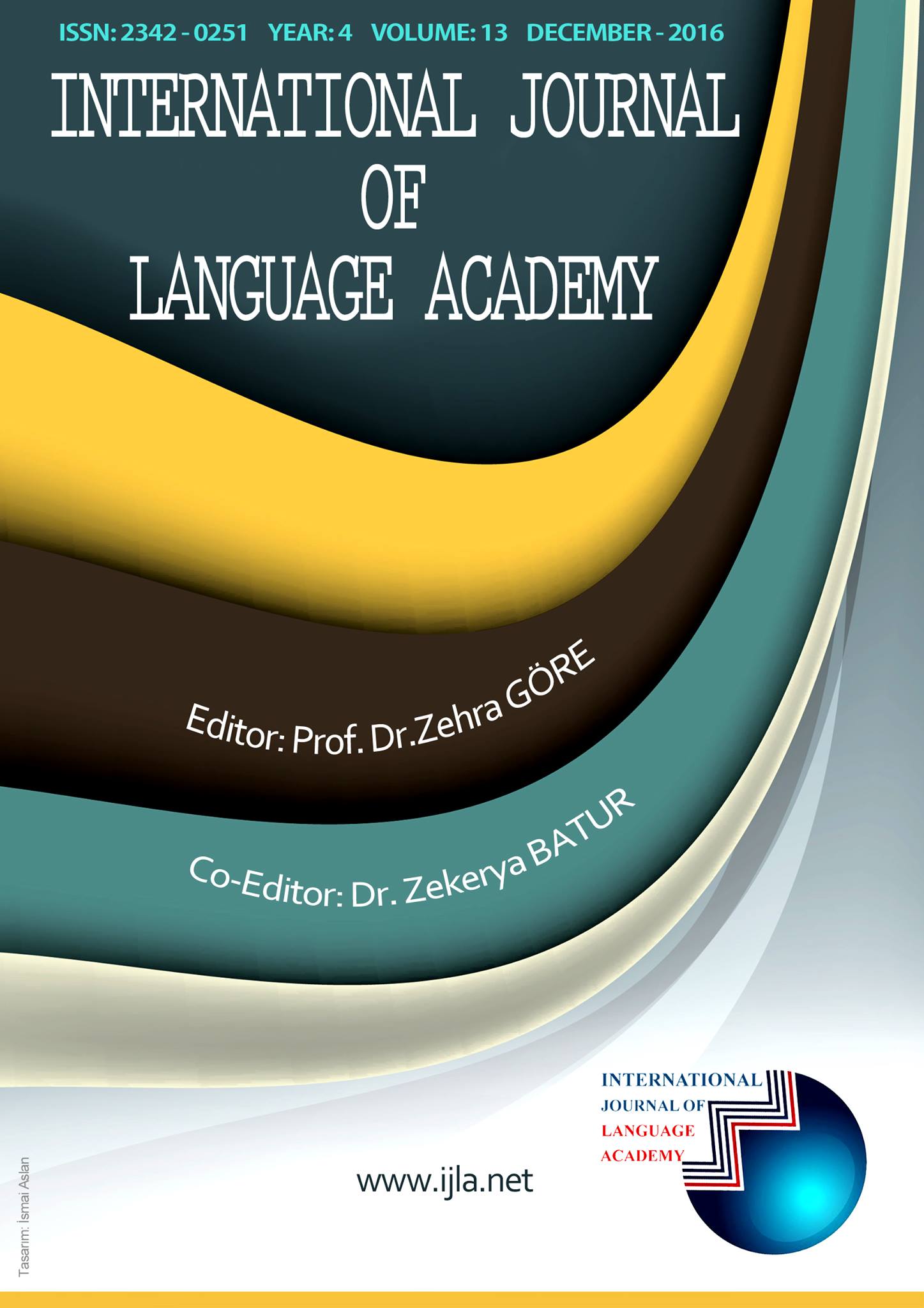Author :
Abstract
A nonjudgmental expression formed by the juxtaposition of at least two words is called a ‘word phrase’. The elements that form the phrase have structural and semantic relations between themselves. A complete hierarchy is dominant in the phrase. In Turkish, the auxiliary element comprised of words that form the phrase is at the beginning while the main element is at the end. The auxiliary element specifies and completes the main element, which is the center or head of the phrase. In traditional grammar, word phrases are called ‘specifying groups’. Noun complements involved in specifying groups are the smallest word phrases that two or more nouns form within the framework of certain rules. In a noun complement, the first word that forms the noun complement is the modifier and the second one is the modified element. A modifier integrates and completes the meaning of the modified element. The suffixes added to the modifier and modified element, indicate the type of the noun complement. When considered formally, if both elements of the noun complement take a suffix, it is a determined noun complement (noun + genitive case + noun + possessive suffix); if only the second element takes a suffix, it is an undetermined noun complement (noun+[Ø] + noun + possessive suffix). If neither element of the noun complement takes a suffix, it is a noun complement with no suffix (noun+[Ø] + noun + [Ø]). Noun complements formed from at least three words and whose modifying and modified words form another noun complement within them are noun complement chains (noun + genitive case + noun + genitive case + noun + possessive suffix). An adjectival complement is a word phrase that a noun forms with an adjective or adjectival phrase (adjective + noun).The aim of this study is to examine the semantic relations between the modifying and modified elements and the types of noun complements in Turkish based on the suffixes they take, and to demonstrate the relations of the elements relative to each other, especially in noun complements formed by more than two words. In this study, the traditional arrow method and the tree diagram method, created by Generative and Transformational Grammar in its initial period, will be used as analytical models.
Keywords
Abstract
A nonjudgmental expression formed by the juxtaposition of at least two words is called a ‘word phrase’. The elements that form the phrase have structural and semantic relations between themselves. A complete hierarchy is dominant in the phrase. In Turkish, the auxiliary element comprised of words that form the phrase is at the beginning while the main element is at the end. The auxiliary element specifies and completes the main element, which is the center or head of the phrase. In traditional grammar, word phrases are called ‘specifying groups’. Noun complements involved in specifying groups are the smallest word phrases that two or more nouns form within the framework of certain rules. In a noun complement, the first word that forms the noun complement is the modifier and the second one is the modified element. A modifier integrates and completes the meaning of the modified element. The suffixes added to the modifier and modified element, indicate the type of the noun complement. When considered formally, if both elements of the noun complement take a suffix, it is a determined noun complement (noun + genitive case + noun + possessive suffix); if only the second element takes a suffix, it is an undetermined noun complement (noun+[Ø] + noun + possessive suffix). If neither element of the noun complement takes a suffix, it is a noun complement with no suffix (noun+[Ø] + noun + [Ø]). Noun complements formed from at least three words and whose modifying and modified words form another noun complement within them are noun complement chains (noun + genitive case + noun + genitive case + noun + possessive suffix). An adjectival complement is a word phrase that a noun forms with an adjective or adjectival phrase (adjective + noun).The aim of this study is to examine the semantic relations between the modifying and modified elements and the types of noun complements in Turkish based on the suffixes they take, and to demonstrate the relations of the elements relative to each other, especially in noun complements formed by more than two words. In this study, the traditional arrow method and the tree diagram method, created by Generative and Transformational Grammar in its initial period, will be used as analytical models.
Keywords
- Atabay, N., Özel, S., Çam, A. (2003). Türkiye Türkçesinin sözdizimi. İstanbul: Papatya.
- Delice, H. İ. (2007). Türkçe sözdizimi. İstanbul: Kitabevi.
- Demir, T. (2004). Türkçe dilbilgisi. Ankara: Kurmay.
- Demir, C. (2007). Türkiye Türkçesi gramerlerinde isim tamlaması sorunu ve bir tasnif denemesi. Ege Üniversitesi Türk Dünyası İncelemeleri Dergisi/Journal of Turkish World Studies, 7/1, 27-54.
- Ediskun, H. (1999). Türk dilbilgisi. İstanbul: Remzi Kitabevi.
- Erkman-Akerson, F. and Özil, Ş. (1998). Türkçede niteleme, sıfat işlevli yan tümceler. İstanbul: Simurg.
- Gemalmaz, E. (1994). Türkçenin isim tamlamalarının derin yapısı. Atatürk Üniversitesi Türkiyat Araştırmaları Enstitüsü Dergisi, 4, 1-5.
- Hacer, T., Çetin, P. (2014). Eski Türkçeden günümüze eksiz ad tamlaması meselesi. Dil Araştırmaları, 15, 9-38.
- Hatipoğlu, V. (1972). Türkçenin sözdizimi. Ankara: TDKY.
- Karaağaç, G. (2011). Türkçenin söz dizimi. İstanbul: Kesit Yayınları.
- Karahan, L. (2014). Türkçede sözdizimi. Ankara: Akçağ.
- Kırkkılıç, A., Ulaş, H. (2003). Ses ve Şekil Bilgisi. İstanbul: Aktif Yayınevi.
- Özkan, M., Sevinçli, V. (2013). Türkiye Türkçesi Söz Dizimi. İstanbul: Ak.
- Şimşek, R. (1987). Türkçe Sözdizimi. Trabzon: Kuzey Gazetecilik Matbaacılık.
- Uzun, N. E. (2000). Ana Çizgileriyle Evrensel Dilbilgisi ve Türkçe. İstanbul: Multilingual.
- Yavuz, M. A. (1999). Türkçede Ad Niteleyici Sözcüklerin Sınıflandırılması Sorunu. 13-15 Mayıs 1999, 13. Türk Dilbilim Kurultayı, İstanbul: Boğaziçi Üniversitesi.
